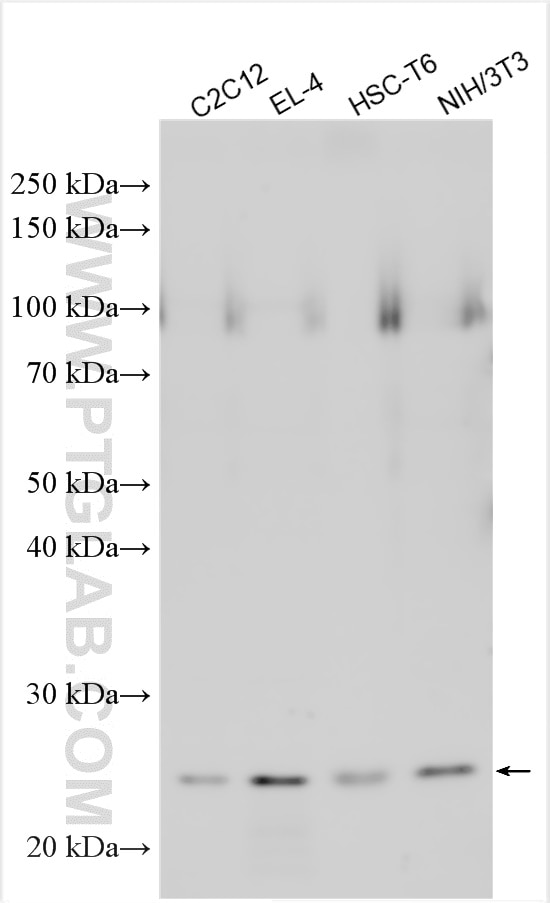Tested Applications
| Positive WB detected in | NIH/3T3 cells, EL-4 cells, HSC-T6 cells |
Recommended dilution
| Application | Dilution |
|---|---|
| Western Blot (WB) | WB : 1:500-1:2000 |
| It is recommended that this reagent should be titrated in each testing system to obtain optimal results. | |
| Sample-dependent, Check data in validation data gallery. | |
Product Information
30589-1-AP targets IL-17F in WB, ELISA applications and shows reactivity with mouse samples.
| Tested Reactivity | mouse |
| Host / Isotype | Rabbit / IgG |
| Class | Polyclonal |
| Type | Antibody |
| Immunogen | Recombinant protein Predict reactive species |
| Full Name | interleukin 17F |
| Calculated Molecular Weight | 17KD |
| Observed Molecular Weight | 17-25 kDa |
| GenBank Accession Number | NM_145856.2 |
| Gene Symbol | IL-17F |
| Gene ID (NCBI) | 257630 |
| Conjugate | Unconjugated |
| Form | Liquid |
| Purification Method | Antigen affinity purification |
| UNIPROT ID | Q7TNI7-2 |
| Storage Buffer | PBS with 0.02% sodium azide and 50% glycerol, pH 7.3. |
| Storage Conditions | Store at -20°C. Stable for one year after shipment. Aliquoting is unnecessary for -20oC storage. 20ul sizes contain 0.1% BSA. |
Background Information
IL-17F, which is expressed by helper T cell 17(Th17) (at protein level). The expression pattern reflects the differentiation state. In fully differentiated Th17 cells, the level of IL-17a-IL-17f heterodimers is higher than that of IL-17a-IL-17a and IL-17f-IL-17f dimers (PMID:18025225), which are mainly secreted in the intestine (PMID:29915298). It is expressed by resident cells, epithelial cells and immune cell subsets of lamina propria (including natural killer cells, dendritic cells, macrophages and various T and B cell subsets) (PMID:16990136, PMID:29915298). The molecular weight of IL-17F is 17 kDa. IL-17F has the strongest similarity with IL-17A, and forms homodimer or heterodimer with IL-17A.
Protocols
| Product Specific Protocols | |
|---|---|
| WB protocol for IL-17F antibody 30589-1-AP | Download protocol |
| Standard Protocols | |
|---|---|
| Click here to view our Standard Protocols |



